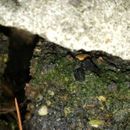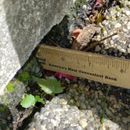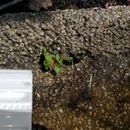How to assess where humidity is coming from
I own a first floor condo on a slab, built in the 80’s. Ever since we have owned it the indoor humidity is very high, around 68%–even on dry summer days. You don’t need a meter to know it is high because you can feel it, but I have used several different home thermometer devices and now my new Nest…they all agree.
There are no leaks under the sinks, toilet or bathtub. Windows were replace about 10 years ago.The bath fan works and the dryer vent is clear. There is carpet with stainmaster pad. I didn’t notice any water stains on slab when the new carpet was laid. There is a downslope toward the building from the parking lot and it gets really wet there, the sprinkler system keeps it wet too. The humidity seems to get worse in sprinkler season. Found a crack in the foundation of the slab. It doesn’t go all the way up to the siding. it is right behind the downspout which has an old old block under it. It goes down at least 4-5 inches based on a stick I stuck in it and is 6″ deep into it (see photo). Could be deeper but didn’t fit ruler…
What kind of professional can help me tell why it so humid all summer?? Even today with 29% humid outside it is 60%. It was 55% with the door open but went up when I shut the door and left. Also, the condo on each side of me does not have the high humidity, making me think it’s the crack. I didn’t ask the upstairs people. This is going to be a rental but right now my son lives there, so I need to keep my expenses low and hopefully it is something the HOA should fix (foundation)
GBA Detail Library
A collection of one thousand construction details organized by climate and house part












Replies
If I were you I would start with getting a pin type moisture meter that has settings for drywall, concrete, etc and seeing if you can collect any evidence that helps support your theory.
>"Ever since we have owned it the indoor humidity is very high, around 68%–even on dry summer days. "
The definition of "...dry summer days... " needs to be expanded upon. The "relative" in relative humidity is relative to the temperature. When it's 85F and a "dry" 50% RH outdoors, cooling that body of air to 75F results in a relative humidity of 69%. The absolute humidity is often reported in the weather reports as dew point. The dew point of 75F 68% RH air is about 64F. When the outdoor dew points are 64F or higher the ventilation air itself contributes a 68%RH indoor air at an indoor temp of 75F.
A dew point of 55F corresponds to a healthy comfortable 50% RH @ 75F, so increasing the ventilation rate when the outdoor dew points are 55F or less will help dehumidify to healthy levels.
In most of NJ the midsummer outdoor dew point average is above 65F, so the outdoor humidity will be above the healthy-comfortable 55F dew point mark well over half the time:
https://weatherspark.com/m/23783/7/Average-Weather-in-July-in-Newark-New-Jersey-United-States#Sections-Humidity
That's not to say that there aren't indoor moisture sources contributing to the problem, but that running a fan and pulling in outdoor air isn't going to solve the summertime humidity problem. Mechanical dehumidification would be needed just to keep the ventilation air from making a first floor condo with a low sensible cooling load from feeling clammy or sticky much of the time, since the air conditioning may not run long enough to provide much dehumidification.
Can you measure how much water your AC is removing and compare it to your neighbors? You don't know that you don't have a lack of removal (vs excessive moisture entry) problem.
Matt, do any of the cheap ones work on concrete?
Jon, Part of it is an oversized AC which has been slowed down to the slowest speed. I can try to see what it removes, but it just comes back and back and my son can't afford to run a/c and dehumidifier so much. Plus, we want to rent this out next year and no tenant wants to have to run a dehumidifier!
Dana, Today's humidity right now outside is 26% dewpoint is 34 . My 2 story home with the ac turned off is around 43% today. I know the ac affects it because when my new system was on too high of a fan speed my humidity was waaay up (bad install). This single floor 933 sq foot condo is always 15-20% higher than my house in the summer. The condo was at 68% and 74 when I arrived around noon. I left the doors and windows open with a fan blowing the cool air in and the humidity reading dropped to 55. An hour later it was reading 60 and now, 4 hours later, it is 62 with a temp of 74. It's a nice dry day, no ac needed. Why is the humidity 62% right now??? It was 68-70 humidity over the warm weekend, with room temp of 74. ALSO, the 2 neighbors, also ground floor did NOT have humidity problem when I went to their homes last year using the same device. (and they felt fine, you can feel the clammy air)
The AC is not working now (but as I said, this problem has been every summer) and I will mention it again to the repairman tomorrow, however tomorrow is forecast to be like today so won't be a good day to assess the moisture removal. I also have a basement waterproofing company willing to come take a look.
>"...humidity right now outside is 26% dewpoint is 34..."
>"...hours later, it is 62 with a temp of 74..."
An RH of 62% @ 74F corresponds to a dew point of 60F.
If the outdoor dew point is 34F and the indoor dew point is 60F you indeed have some major indoor sources of humidity.
When tracking this stuff always good to convert to dew point, or at the very least make it a point to always include the temperature, not just the %RH. Without the temperature to which it's relative the RH % is all but meaningless.
Cannot figure out a source though except for the slab being very wet underneath. The neighbors don't have the problem, but my area is lower than one of them and the other one isn't on the "wet" side.
Nothing is leaking. I really feel like the HOA should help me out here, but don't know what they could do since I don't know the cause either. I own from the finished side of the sheetrock in, behind it and under the carpet is owned by the condo association. Don't know how to get them involved in this problem....
It's actually pretty difficult to accurately measure the moisture content of air; please read this GBA resource: https://www.greenbuildingadvisor.com/?s=understanding+humidity. Just need to make sure that we have reasonable data to work with.
And this GBA resource on household sources of moisture: https://www.greenbuildingadvisor.com/article/moisture-sources-relative-humidity-and-mold.
Your reasoning on the source of moisture seems sound.
There is no easy way to assess the moisture content of concrete; for reasonable measurements you need to take reading from at least 40% down into the thickness of the concrete; see this GBA resource: https://www.greenbuildingadvisor.com/article/extending-the-reach-of-a-moisture-meter.
It is not going to be inexpensive to either do your own measurements of concrete moisture or get a technician to do it. But to sufficiently convince your HOA you have identified the source of the moisture and tagged it as their responsibility, this is probably what you need.
Peter